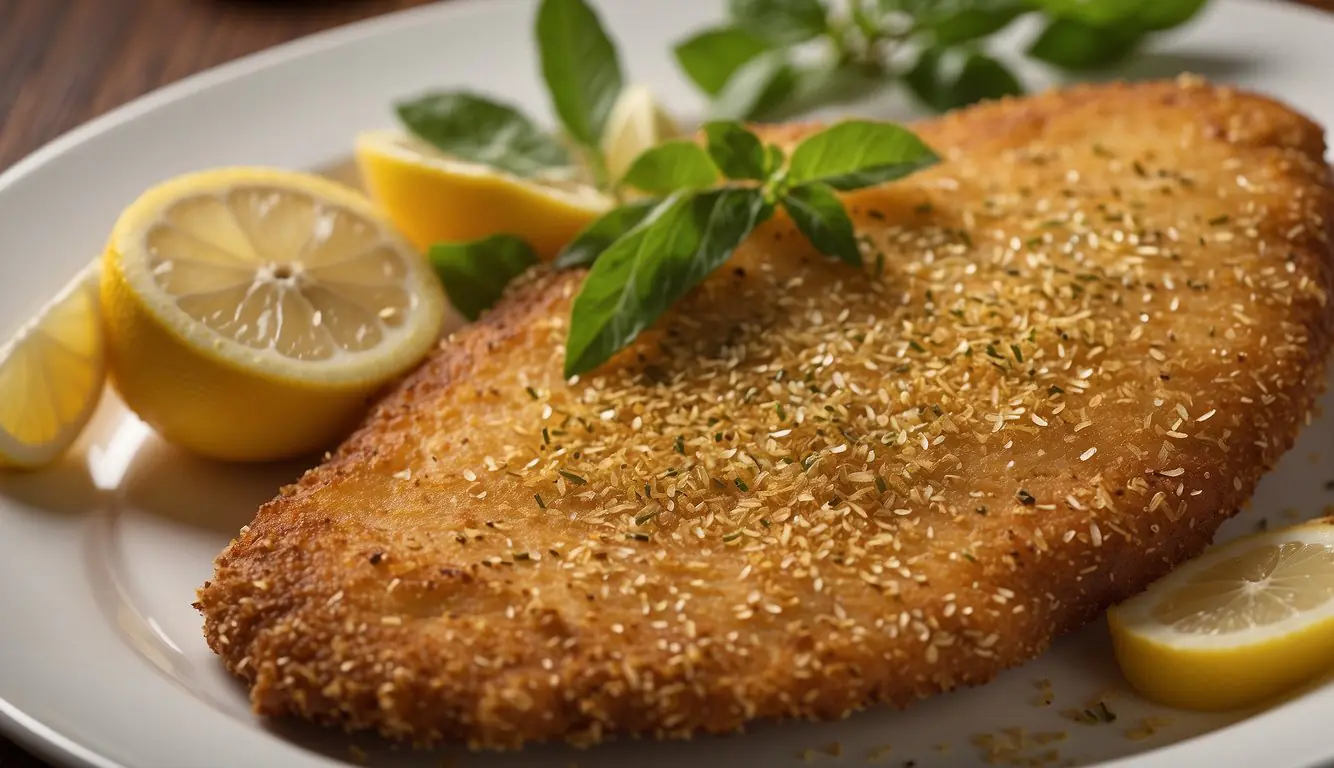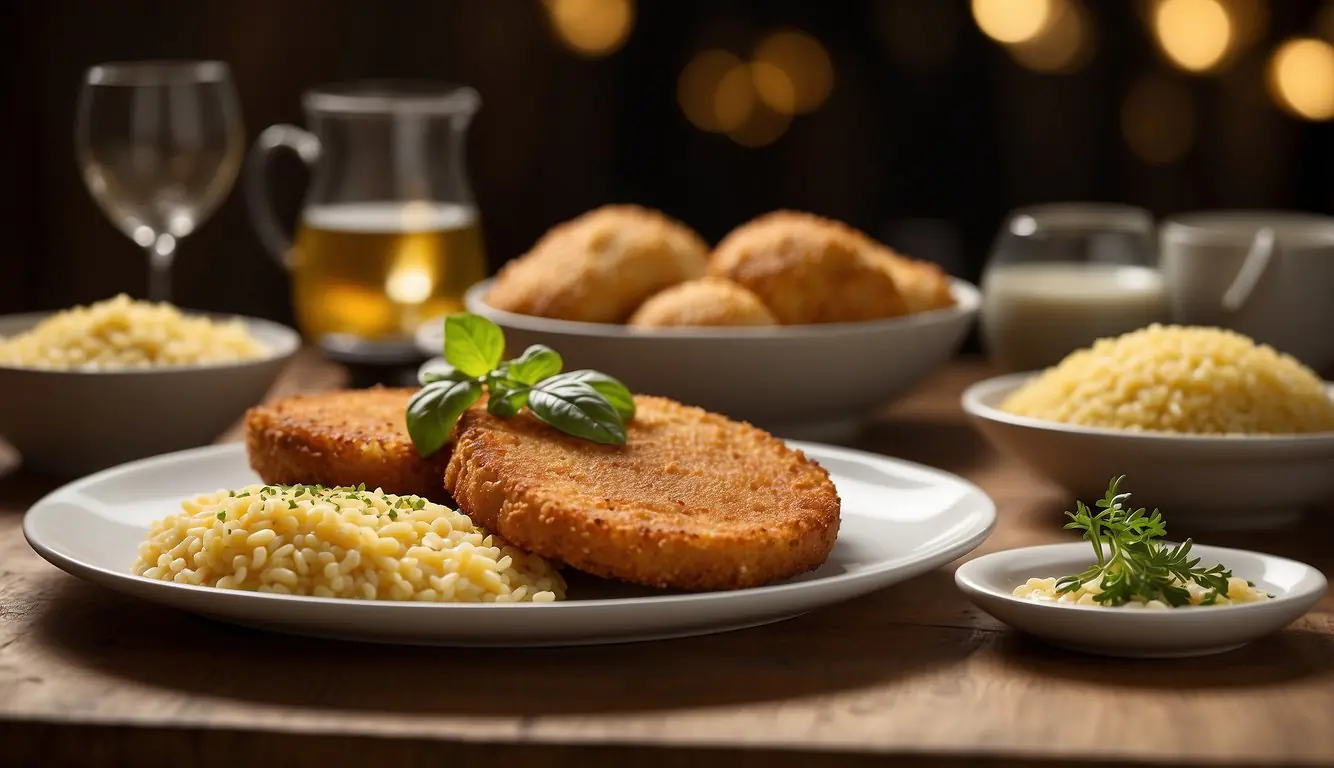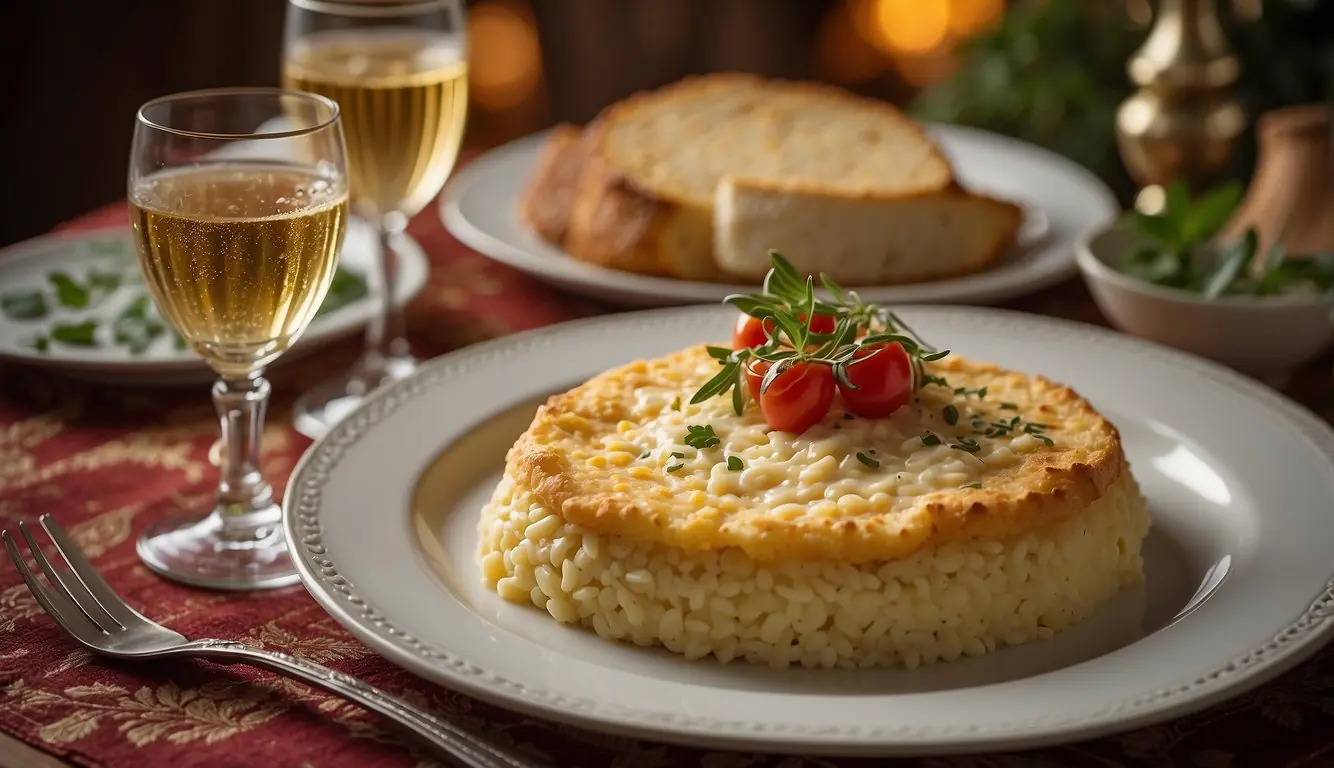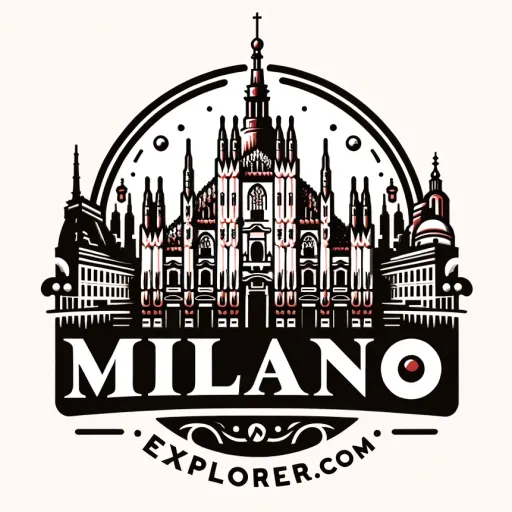Delving into the culinary gems of Milanese cuisine unveils a treasure trove of traditional dishes that embody the rich flavors and history of the region.
Among these, the Cotoletta alla Milanese stands out as a prominent figure. This iconic dish is a testament to the simplicity and elegance of Italian cooking, presenting a perfectly breaded and fried veal cutlet that is both crispy and tender.
Essentially Milan on a plate, Cotoletta alla Milanese is not just food; it’s a cultural experience, offering a taste of the city’s centuries-old gastronomic heritage.

Revered for its golden crust and juicy interior, the Milanese cutlet is an essential part of Milan’s culinary identity.
Whether served at a traditional family gathering or savored at a local trattoria, this dish reflects the authentic flavors that have been enjoyed by generations.
The traditional preparation method involves coating a veal cutlet in breadcrumbs and frying it to perfection, creating a delightful contrast between the crunchy exterior and the succulent veal within.
When in Milan, one can savor the authentic Cotoletta alla Milanese at numerous eateries, each rendition telling its own story of this beloved classic.
Cotoletta alla milanese
Key Takeaways
- Cotoletta alla Milanese is a significant dish in Milanese and Italian cuisine.
- A Milanese cutlet epitomizes the culinary traditions of Milan with its simple, yet exquisite preparation.
- Authentic local eateries offer a cultural and gastronomic connection through this historic dish.
History and Origin
As we explore the roots of traditional Milanese cuisine, the storied past of Cotoletta Alla Milanese stands out, reflecting the cultural influences and culinary evolution of the region.
The connection between this venerated dish and the globally recognized Wiener Schnitzel also encapsulates the broad influence of Milanese cooking traditions.
Cotoletta Alla Milanese
Cotoletta Alla Milanese is not merely a dish; it’s a culinary testament to the rich history of Milan and Lombardy.
The earliest documentation of this breaded veal cutlet dates back to 1148, where it’s mentioned as lumbulus cum panitio. Traditionally, it consists of a tender veal loin, breaded and pan-fried to perfection, though variations now include boneless meat as well.
Some assert the evolution of Cotoletta Alla Milanese occurred independently within Milan, while others speculate on a shared heritage with France’s veal dishes.
Wiener Schnitzel and Global Influence
The Wiener Schnitzel is a breaded and fried cutlet dish, similar to Cotoletta Alla Milanese, but typically made from haunch.
While Austrians claim the origin of their Wiener Schnitzel, debates continue about whether it was inspired by the Italian specialty.
Irrespective of this, the Wiener Schnitzel has undeniably become a global sensation, further demonstrating the extensive influence of these iconic breaded cutlets.
Despite their shared characteristics, each dish remains unique to its culture, with Cotoletta Alla Milanese reflecting the essence of Milan and Wiener Schnitzel symbolizing Austrian tradition.
Main Ingredients

In preparing Cotoletta alla Milanese, we focus on the quality of veal and breading essentials.
Quality of Veal
For Cotoletta alla Milanese, the veal must be of the highest quality.
Traditionally, a bone-in veal chop from the loin section is used. This prime cut should be tender and pale pink, indicating a young age of the animal and proper handling.
We often prefer to use a slice that is about 1 to 1.5 inches thick which allows for a juicy interior and a crispy coating.
Breading Essentials
The breading is a key aspect of the Milanese cutlet. Typically, it includes several components: flour, egg, and breadcrumbs.
First, the veal is lightly coated with seasoned flour, which helps the beaten eggs adhere to the meat.
Next, freshly-made breadcrumbs are pressed onto the veal to create a thick outer layer.
For an authentic touch, adding grated Parmigiano Reggiano or pecorino into the breadcrumb mixture imparts a rich flavor.
To cook, the breaded cutlets are fried in clarified butter or regular butter to achieve the perfect golden-brown crust without burning.
Serving with lemon wedges contributes a bright, acidic contrast to the rich, savory taste of the veal.
Preparation Techniques
When we prepare Cotoletta alla Milanese, our focus is on mastering the breading and frying processes to ensure the veal is tender and crispy.
Breading and Frying
The technique starts with coating the veal cutlets in beaten eggs, making sure both sides are evenly covered.
We then press the cutlets into seasoned breadcrumbs.
The aim here is to ensure a thin and even coating that will fry up to be deliciously golden and crispy.
While the exact recipe for the breading mixture can vary, a traditional one may involve a combination of finely ground breadcrumbs, Parmesan cheese, and herbs.
For a guide on creating the perfect breading mixture, explore this authentic recipe for Cotoletta alla Milanese.
Achieving the Perfect Crispiness
To achieve that signature golden brown color and satisfying crunch, frying is key.
We cook the breaded cutlets in a shallow pan with melted butter over medium heat.
The goal is to maintain a consistent temperature to avoid burning the butter.
We aim for a cooking time of 7-8 minutes on each side, adjusting the heat as necessary to prevent burning while achieving the perfect crispiness.
If you’re interested in the intricacies of frying and want to know more about how to prevent common mistakes, consider reading La Cucina Italiana which discusses various frying techniques.
Variations and Related Dishes

Cotoletta alla Milanese stands proudly amongst the treasures of Milan’s culinary scene. Yet, we discover a rich tapestry of variations and dishes related by history and flavor in the region’s cooking.
Ossobuco and Risotto Alla Milanese
Ossobuco alla Milanese is a hearty, bone-in veal shank dish, slow-cooked until tender in a white wine and broth fusion.
It’s often accompanied by Risotto alla Milanese, a creamy, saffron-infused rice that complements the rich flavors of the ossobuco. Here the bone marrow plays a starring role, bringing a luscious depth to the dish.
Veal Saltimbocca and Other Milanese Specialties
Another classic is Veal Saltimbocca, traditionally made with thinly sliced veal loin topped with sage and prosciutto, cooked until golden.
Milan’s kitchens also serve various veal chops and cutlets, ranging from the boneless veal cutlets to the more traditional bone-in veal chop, each prepared with a distinctive Milanese twist.
Whether fried to crispy perfection or served in more elaborate presentations, they all share a place in Milan’s rich culinary heritage.
Side Dishes and Accompaniments

When we enjoy the classic Cotoletta alla Milanese, we often pair it with side dishes that complement its crispy, tender qualities. Below we’ll explore some traditional accompaniments that not only enhance the main dish but also adhere to the Milanese culinary tradition.
Arugula Salad as a Classic Pairing
A simple, yet flavorful, arugula salad is a go-to side that balances the richness of the veal.
Tossed with a light vinaigrette and perhaps a sprinkle of shaved Parmesan cheese, the peppery notes of arugula marry well with the meat’s texture and flavor.
Other Popular Sides
Fries and roasted potatoes offer a comforting presence on the plate, lending a satisfying crunch and earthiness.
For a more authentic Milanese experience, consider saffron risotto; the aromatic spice not only lends its signature color but a subtle complexity to the dish.
You can find out how to prepare the perfect saffron risotto from experts in Italian cuisine.
Lastly, a kitchen staple like basil can be used to garnish or incorporated into salads and risottos for a fresh, herbaceous accent.
Where to Dine
When searching for authentic Italian cuisine, we consider the atmosphere just as important as the dish itself. Milan offers a plethora of dining options that range from timeless establishments to innovative eateries.
This ensures that any culinary adventure here is steeped in local flavors and traditions.
Milanese Restaurants and Eateries
Milan is a treasure trove of culinary delights, with a multitude of restaurants serving up some of the finest Italian food.
For the quintessential Milanese experience, visit Trattoria del Nuovo Macello, an establishment with a glorious history dating back to 1928. The rich milanese heritage is well-preserved here, offering dishes that speak to the soul of the city.
Another worthy mention is Ratanà, set in a restored early-20th-century building, where the risotto alla milanese is suffused with the aroma of saffron, coloring the dish with Milan’s unique culinary palette.
Eating Cotoletta Outside of Milan
Not confined within city boundaries, the joy of eating cotoletta can be found in the wider Lombardy region. Charming bistros and rustic trattorias celebrating traditional Milanese dishes abound, letting you savor the authentic cotoletta alla milanese even while exploring the idyllic Italian countryside.
Ossobuco, another staple, expresses the rich culinary lineage of Milan and is a must-try at any eatery that prides itself on its Milanese identity.
In each of these local establishments, the commitment to culinary excellence ensures you’re not just enjoying a meal, but also partaking in an age-old tradition of Italian gastronomy.
Conclusion

In our exploration of Milanese cuisine, we have savored the rich flavors and history behind the iconic Cotoletta alla Milanese. This dish, a staple of Lombardy’s culinary tradition, stands out with its juicy interior and crisp, golden coating.
Traditionally, the veal Milanese is likened to an ‘orecchio d’elefante’ (elephant’s ear) due to its characteristic large, thin shape.
The key to its delectable texture lies in the use of homemade breadcrumbs, which adhere to the tender milk-fed veal that’s been bathed in egg wash.
A quintessential aspect of the cotoletta experience is achieving that perfect crust, which is why we always suggest taking the few extra 20 minutes to craft your own breadcrumbs for that authentic touch.
Cooking with heart-healthy olive oil enhances the flavor, although some recipes may opt for butter for a different taste profile.
The final flourish of sea salt flakes amplifies the natural savoriness of the meat.
While veal is traditional, variations exist, including versions using chicken or pork.
Regardless of the meat choice, a properly prepared cotoletta is set apart by its succulent meat encased in a crunchy, golden exterior.
This Milanese treasure, served simply with a wedge of lemon or a light salad, remains a testament to the rich culinary heritage it hails from.
With our guide, you have the essential information to create this beloved Milanese specialty in your own kitchen, or [explore its origins] (https://www.tasteatlas.com/cotoletta-alla-milanese) and variants from expert sources.
Frequently Asked Questions
In this section, we address common inquiries about the iconic Cotoletta alla Milanese and its place in traditional Milanese gastronomy.
What are the key ingredients in a Cotoletta alla Milanese?
The key ingredients in a Cotoletta alla Milanese are veal cutlets, seasoned breadcrumbs, eggs, flour, and butter.
How do you prepare a traditional Cotoletta alla Milanese?
To prepare a traditional Cotoletta alla Milanese, coat veal cutlets in flour, dip them in beaten eggs, bread them with seasoned breadcrumbs, and then pan-fry them in butter until golden and crispy.
What other dishes typify traditional Milanese cuisine?
Other dishes that typify traditional Milanese cuisine include Risotto alla Milanese, flavored with saffron and rich broth, and Ossobuco, a hearty slow-cooked veal shank in a white wine reduction.
How does Cotoletta alla Milanese differ from a Wiener Schnitzel?
Cotoletta alla Milanese traditionally has a bone-in veal cutlet and is fried in butter, while a Wiener Schnitzel is typically made from boneless meat and fried in lard or oil.
Can Cotoletta alla Milanese be made with chicken instead of veal?
Yes, Cotoletta alla Milanese can be made with chicken, as a variation for those who prefer poultry over veal. The process is similar, as outlined in this alternative chicken version.
What does ‘alla Milanese’ signify in Italian cooking?
‘Alla Milanese’ in Italian cooking signifies a dish that is breaded and fried, typically associated with Milan’s culinary style.
It often involves the use of butter in the cooking process, suggesting a rich and comforting flavor profile.

